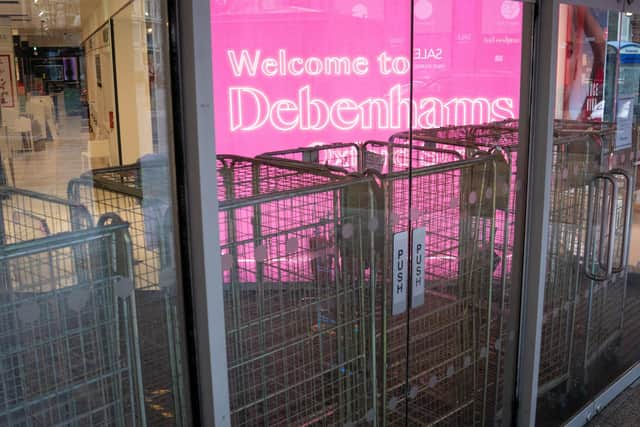One in six Scottish shop premises now lies empty with more pain to come
In the first quarter of 2021, the vacancy rate rose to 15.3 per cent, from 14.4 per cent in the previous three months, and 2.4 percentage points higher than at the same point in 2020 just as the coronavirus crisis was developing.
Shopping centres bore the brunt, amid a string of retail closures such as Debenhams, Arcadia Group and Thorntons, with vacancies increasing to 20.1 per cent from 18.2 per cent in the closing quarter of 2020.
Advertisement
Hide AdAdvertisement
Hide AdOn the high street, vacancies increased to 13.9 per cent, from 13.5 per cent. Retail park vacancies increased to 12.9 per cent from 11.9 per cent, though it remains the location with by far the lowest rate as more, larger retailers remained open during lockdown.


David Lonsdale, director of the Scottish Retail Consortium, said: “The maelstrom wrought by the pandemic and the forced closure of stores over the past year is laid bare in these figures.
“The troubling deterioration in the vacancy rate over the past year has affected all types of retail destinations, with the uptick in empty units in shopping centres especially marked. Almost one in six Scottish shop premises now lies empty, above the UK average rate, and it’s far from certain the vacancy rate has crested.
“It’s a vivid reminder of the economic toll of the pandemic and of repeated lockdowns and restrictions. This has been the most bruising period for many of Scotland’s retailers, and even with shops now permitted to re-open the fact is large swathes of the sector face an uncertain future.”
Lucy Stainton, director at the Local Data Company, said: “The number of vacant units has continued to increase in the first three months of this year across the country, despite much of the market being temporarily closed for the second lockdown.
“With this in mind, and despite these percentages increasing significantly, we would argue that we have not yet seen the true impact of these lockdowns. We have seen a number of household names announcing further store closures or indeed, disappearing from our high streets entirely showing how challenged physical retail continues to be.”
A message from the Editor:
Thank you for reading this article. We’re more reliant on your support than ever as the shift in consumer habits brought about by coronavirus impacts our advertisers. If you haven’t already, please consider supporting our trusted, fact-checked journalism by taking out a digital subscription: www.scotsman.com/subscriptions
Comments
Want to join the conversation? Please or to comment on this article.
